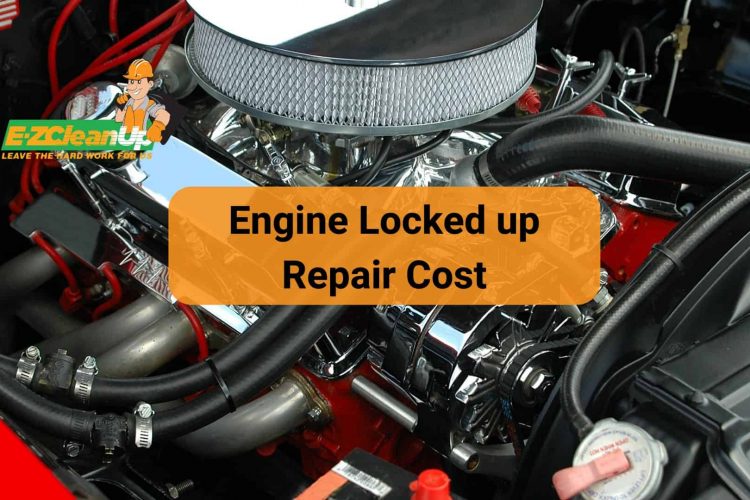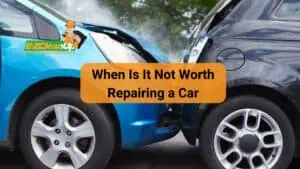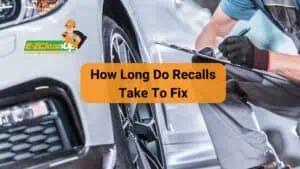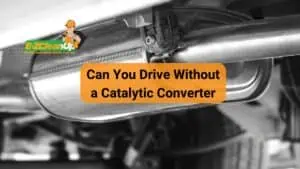Engine lock-up repair costs fluctuate based on damage, vehicle type, and repair location. Minor issues might cost $500–$1,500, whereas severe cases requiring engine replacement range from $3,000 to $10,000. Considering warranty offers can also impact final expenses.
If you want to know more about engine locked up repair cost, read our guide below.
Cost Factors in Repairing a Locked-Up Engine
When an engine locks up, addressing the problem swiftly and effectively becomes critical due to the extensive damage it can cause. Here’s a look at the factors influencing repair costs and estimates based on various scenarios:
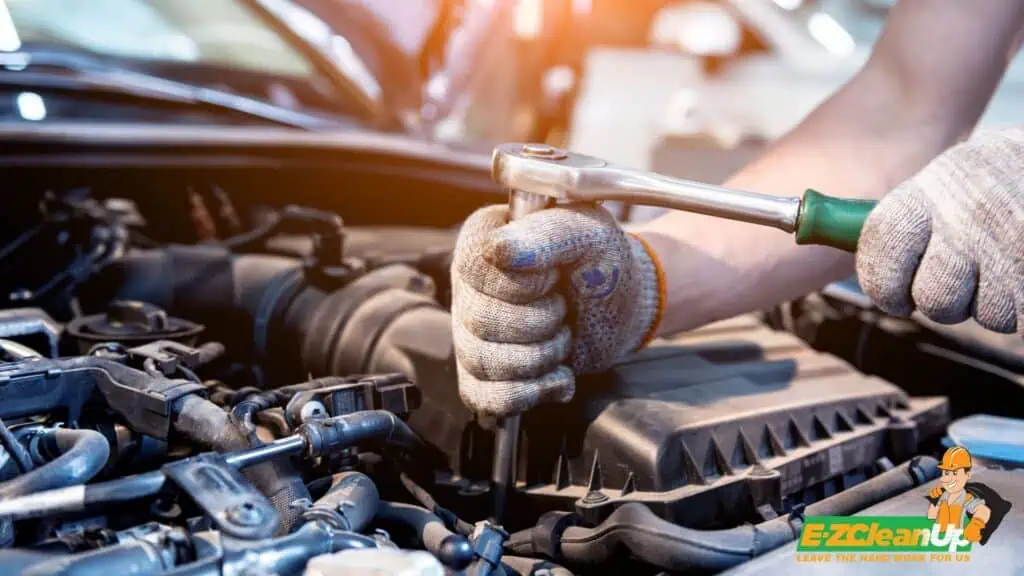
Variables Affecting Repair Costs
Several factors can significantly affect the cost of repairing a locked-up engine:
- Cause of the Problem: The nature of the issue, whether it’s due to lack of lubrication, a failed component like the timing belt, or overheating, plays a substantial role in determining repair complexity and cost.
- Vehicle Type: Repair costs can also vary depending on the vehicle’s make and model. Luxury and high-performance vehicles typically incur higher repair costs due to more expensive parts and specialized labor.
- Location of Repair Shop: Geographic location impacts labor rates and part availability, with urban areas often having higher costs.
Estimated Cost Range for Different Repair Scenarios
The cost to fix a seized engine can range depending on the issues it incurred:
- Minor Repairs: If the engine has seized due to a relatively minor issue, like certain component failures that don’t require a complete overhaul, repair costs can be on the lower end. In this case, it can range from $1,500 to $2,500.
- Major Overhauls: In cases where significant damage has occurred, such as needing to replace or extensively repair the engine block or other critical components, costs can escalate to between $3,000 and $10,000. In severe cases, especially in older or less valuable vehicles, replacing the engine or even the entire vehicle might be more cost-effective.
Initial Steps to Take When Your Engine Locks Up
When confronted with a locked-up engine, understanding the initial steps to address this critical issue can prevent further damage and potentially save on costly repairs.
If your engine locks up while you are driving, immediate action is necessary. First, attempt to pull over to a safe location. Turning off the engine is crucial to preventing further damage. Note that steering and braking may require more effort once the engine stops running.
Check the engine temperature. If your engine has overheated, allow it to cool down before attempting any further actions. This cooling period can prevent additional engine damage.
It’s also crucial to assess oil and coolant levels. Low levels of these materials can lead to engine lock-up. Check these levels using the dipstick for oil and the marked lines on the coolant reservoir. If low, topping them up might help, but be cautious; these could be symptoms of larger issues.
Tools and Supplies Needed for Initial Assessment
To effectively assess and potentially address an engine lock-up, having the right tools at your disposal is essential:
- Basic Toolkit: Includes wrenches, sockets, and screwdrivers to open engine components if necessary.
- Oil and Coolant: For topping up levels if found low, which might temporarily alleviate the issue.
- Breaker Bar and Socket Set: Useful for manually turning the engine via the crankshaft bolt, which can help in identifying if the engine is completely seized.
- Penetrating Oil: This can be sprayed into the cylinders through the spark plug holes to help loosen any rust or corrosion that may be causing the engine to seize.
Diagnosing an Engine Lock-Up
Understanding the signs of an engine lock-up and effectively diagnosing it are critical to managing and potentially resolving this severe issue. Here are some of the most common signs and symptoms to look for:
- Inability to Start: The most immediate sign is the engine failing to turn over, often accompanied by a clicking sound when attempting to start.
- Unusual Noises: Listen for knocking, clanking, or grinding noises, which suggest internal components are hitting against each other due to failure or misalignment.
- Engine Overheating: If the engine overheats, it may emit smoke or steam, indicating severe distress within the engine components.
- Oil and Coolant Issues: Low oil levels or poor oil quality can lead to lock-up. Similarly, coolant leaks or a malfunctioning radiator can cause overheating, contributing to engine seizure.
Professional vs. DIY Diagnosis
When diagnosing a locked engine, deciding between a professional mechanic and a DIY approach is crucial. A mechanic can provide a comprehensive assessment using advanced diagnostic tools. They can check internal components like the timing belt, perform compression tests, and use borescopes to inspect hard-to-reach areas without dismantling the engine.
For those with mechanical skills, basic checks like inspecting the oil level and quality or manually attempting to turn the crankshaft with a breaker bar can confirm suspicions of a lock-up. However, complex issues should be left to professionals to avoid further damage.
In both cases, it’s essential to act quickly to diagnose the issue and prevent worse ones. Regular maintenance and promptly addressing any signs of engine distress can help avoid the severe scenario of a locked engine.
Repair Options for a Locked-Up Engine
Engine lock-up occurs when the internal components of an engine cease to move, effectively freezing the engine in place. This can happen suddenly and is often due to severe internal damage or failures in lubrication or cooling systems.
When it happens, understanding your repair options is crucial. Here’s a breakdown of possible minor repairs and scenarios where a full engine replacement may be necessary.
Minor Repair Possibilities
Minor repairs might be sufficient if the engine lock-up is due to less severe issues like a failed starter or minor component failures that do not affect the core structure of the engine.
Here are steps and considerations for minor repairs:
- Initial Diagnostics: Check oil and fluid levels first, as low levels can often cause engine seizures. This is a relatively simple fix if identified early.
- Breaker Bar Use: If fluid levels are normal, using a breaker bar to manually turn the crankshaft can sometimes free up the engine, especially if it’s not severely damaged.
- Spark Plug Removal: Removing the spark plugs can relieve pressure within the engine. This makes it easier to manually turn the crankshaft, potentially correcting the issue without extensive repairs.
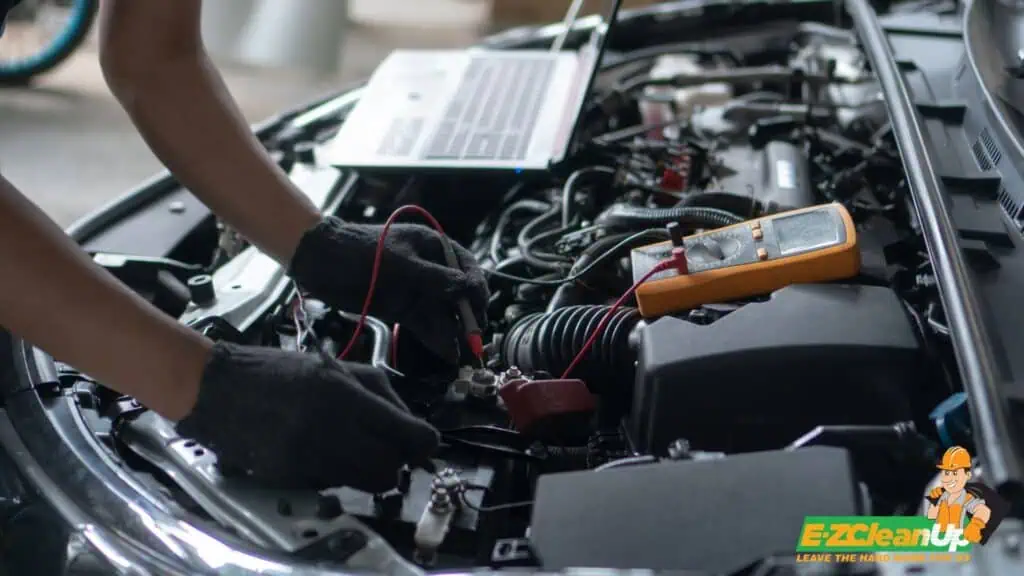
When is a Full Engine Replacement Necessary?
In cases where the engine lock-up is due to major internal damage, such as a seized crankshaft or extensive overheating leading to warped components, a full engine replacement might be the only viable solution.
Considerations for a full replacement include:
- Extent of Damage: If turning the crankshaft doesn’t free the engine or if there is visible damage to major components like pistons or cylinders, these are indicators that a repair might not be sufficient.
- Cost Considerations: Often, the cost of repairing a severely damaged engine can approach or exceed the cost of a full replacement, especially if there’s a risk of recurrent issues.
- Longevity and Value: Deciding between repair and replacement also involves considering the age of the vehicle and its overall condition. If the vehicle is older or has other pending high-cost repairs, investing in a new engine might not be the most economically sensible option.
Preventative Measures and Maintenance Tips
Taking proactive steps in maintaining your vehicle can significantly extend the life of your engine and enhance overall performance. Regular maintenance is crucial in preventing engine lock-up, and here are some essential practices:
- Regular Oil Changes: Changing your engine oil as recommended by your vehicle manufacturer is critical. For most modern cars, this might be every 5,000 to 7,500 miles, but always check your vehicle’s manual for specific guidance.
- Check Fluid Levels: Regularly checking and topping up coolant, brake fluid, and transmission fluid can prevent overheating and other mechanical failures that may lead to engine lock-up.
- Air Filter Maintenance: Ensure that your air filter is clean to prevent dust and dirt from entering the engine and causing damage. A clogged air filter can limit air flow, which can stress your engine.
- Regular Inspections: Periodic checks of the engine for leaks, worn belts, and aging hoses can catch issues before they lead to serious damage.
Tips for Long-Term Engine Health and Performance
For long-term health and optimal performance of your engine, consider the following tips:
- Drive Gently: Avoid putting unnecessary stress on your engine by accelerating gently and avoiding high speeds until the engine has warmed up. This helps in maintaining the turbo system and overall engine health.
- Use Quality Fuel and Oil: High-quality fuel and oil suited to your vehicle’s requirements can prevent build-up of deposits and wear on the engine.
- Let the Engine Cool Down: After a long drive, allow your car to idle for a couple of minutes before turning it off. This practice helps to cool down the turbocharger and prevent oil from coking and damaging the engine.
- Regular Use: Vehicles that sit idle can experience issues like battery drain and fluid deterioration. Regular use helps maintain the moving parts and battery health.

From Engine Lock-Up to Cash Unlock: Your EZ Solution
When your car’s engine locks up, the repair costs can be so steep that selling it seems like the only viable option. Yet, the market for damaged cars is far from lucrative. Here’s where EZ CleanUp can intervene, turning your mechanical misfortune into an opportunity.
By choosing our services, you avoid the pitfalls of the traditional car selling process and go straight to receiving top dollar for junk cars. We ensure a smooth transaction while handling your car in an environmentally responsible way.
Call us to convert your engine troubles into a cash solution.

